Explore all New Cars of 2024
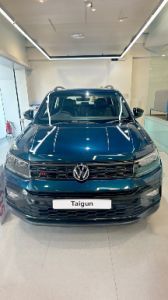 In 8 Pics: Volkswagen Taigun GT Plus Sport Detailed
In 8 Pics: Volkswagen Taigun GT Plus Sport Detailed

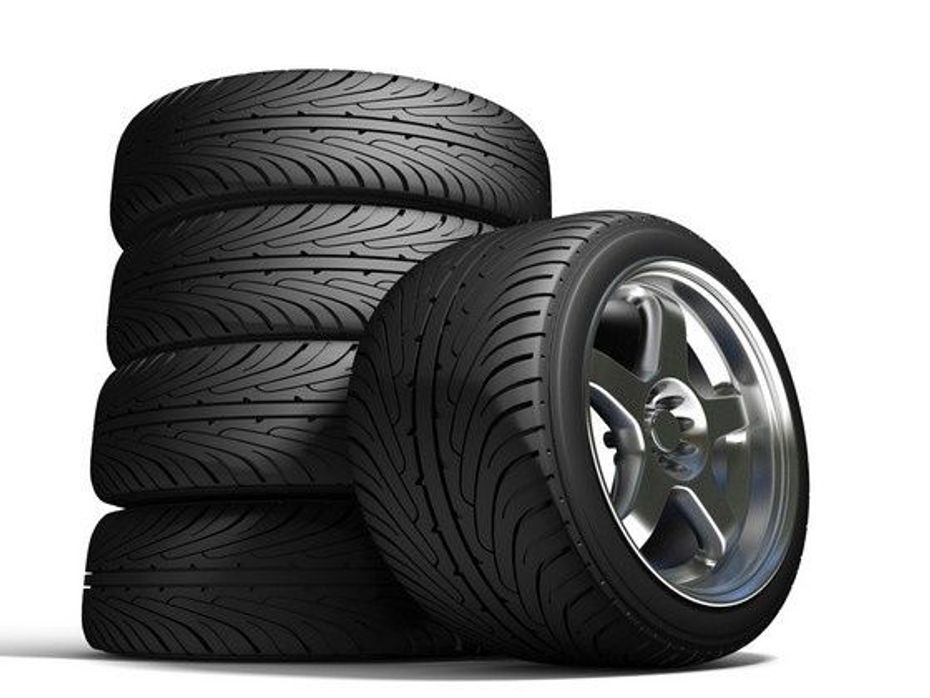
Automobile tyres are described by an alphanumeric tyre code, which is generally molded into the sidewall of the tyre. This code specifies the dimensions of the tyre, and some of its key limitations, such as load-bearing ability, and maximum speed. Sometimes the inner sidewall of the tyre - for tyres with demarcated inner and outer walls - contains information not included on the outer sidewall, and vice versa. Tyre coding has grown in complexity over the years and now is a mix of units, lettering and numbering schemes.
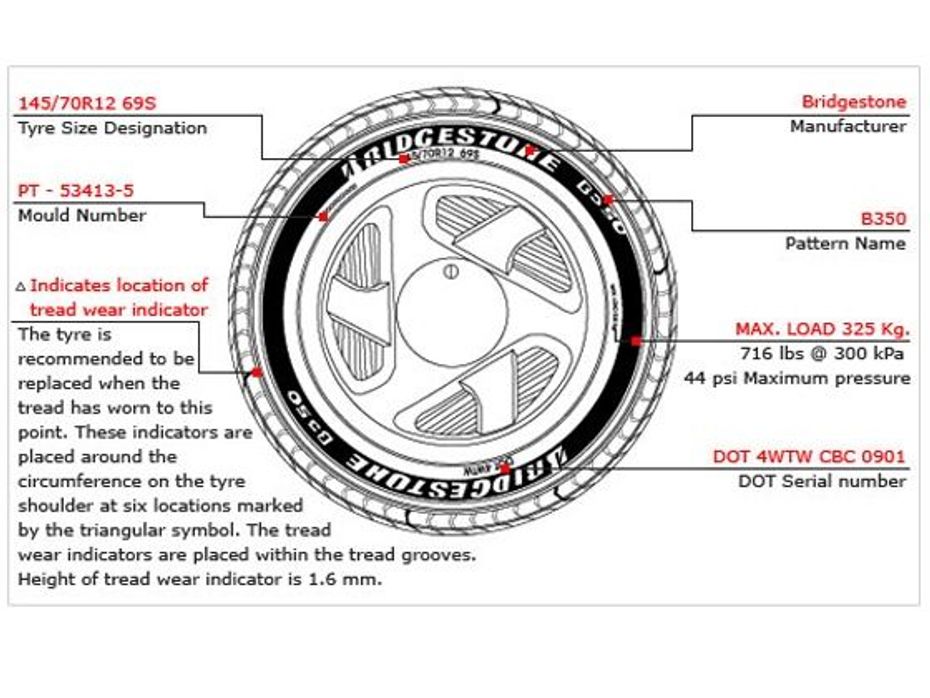
Although different manufacturers use a different placement for their tyre sidewall lettering and numbering, the way they do it is usually standardised. Referring to the diagram above:
1. Manufacturer name
The manufacturer’s name, in this case Bridgestone, is usually the largest marking on the tyre sidewall. Some manufacturers have tyres with the brand name accentuated by adding a rubberised white paint to the letterings. Many users also use a rubber based marker to accentuate the markings on the tyres as it tends to look quite sporty.
2. Pattern Name
If the tyre is in particular a brand that is well known, like ‘Potenza’, expect the manufacturer to give as much importance to the sub brand as it gives its main brand logo. In most other cases though, the model name will be an alpha numeric code.
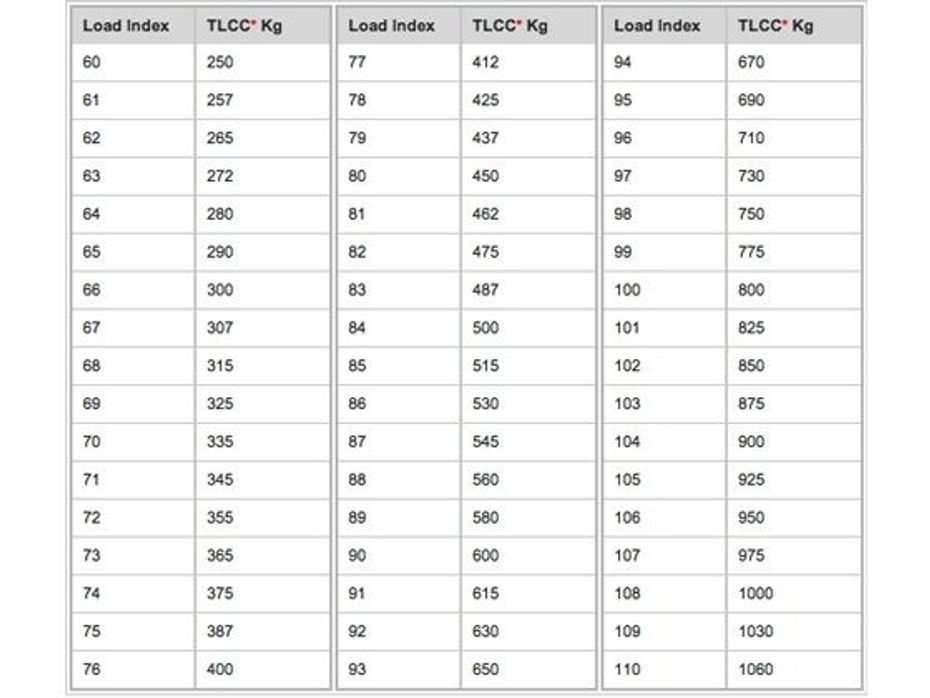
3. Max Load rating
The max load rating is usually a two or three digit number that denotes the maximum permissible load carrying capacity of each tyre. Multiply the number by four (as your car has four wheels) to know how much weight your set of tyres can carry. Some manufacturers though have also started to simplify the nomenclature by directly providing the weight limit in kgs right no the tyre, usually in a smaller font size.
4. Maximum Speed Rating
|
Q |
160 |
|
S |
180 |
|
T |
190 |
|
H |
210 |
|
V |
240 |
|
W |
270 |
|
Y |
300 |
All tyres have a rated speed limit that varies due to the kind of construction they are formed with. Small entry-level hatchbacks do not need their tyres to be rated for higher speeds. On the other hand, a supercar will need tyres rated for higher speeds since they are capable of reaching and sustaining them. Speed ratings are marked on the tyre by a letter from A-Y. MUV like Ecco have Speed rating Q. Most cars made in India (And most tyres made in India) have speed rating between S to H. V to Y rated tyres are used in Super Luxury or Sports cars.
5. Tread wear indicator
All the tyres made in India or imported in India have marking spots on the sidewall corresponding to the locations of the tyre wear markers. These indicators are places around the circumference on the tyre shoulder at six locations marked by triangular symbols. The tread wear indicators themselves are placed within the tread grooves. The height of the tread wear indicator is 1.6mm, which is the minimum CMVR (Central Motor Vehicle Rules) limit for tread depth. If the tyre tread depth reaches to this level, it is advised to immediately change tyres.
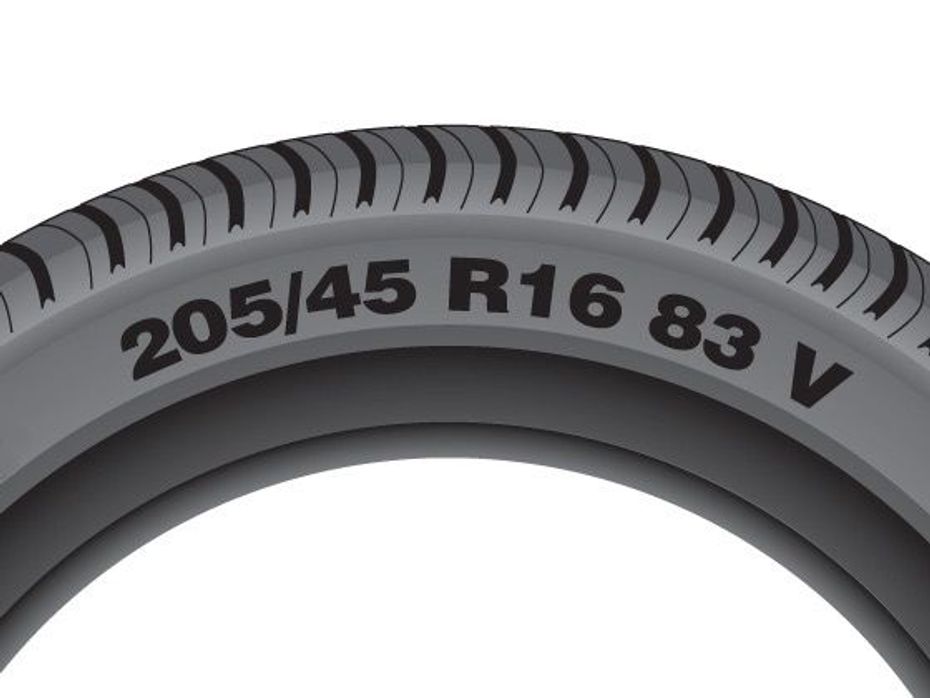
6. Tyre Size
The tyre size on any tyre is denoted in a standardised global designation. Usually, numbers like 145/70 R12 are moulded into the tyre. Reading this number is actually quite simple and not as complicated as people make it to be.
The first part of the number is the width of the tyre in millimetres. The width of the tyre and the aspect ratio, in this case ‘70’ is always differentiated with a ‘/’ mark. The aspect ratio is the height of the sidewall from the rim to the tread, expressed as a percentage of the tread width. For example, if the tyre is 205 mm wide, and its aspect ratio is 50, then the sidewall is about 102.5 mm tall (50 percent of 205 mm). Lower aspect ratio (shorter sidewall) provides better turn-in response than a higher aspect ratio (taller sidewall), but at the expense of less break-away warning and a more jarring ride — in extreme cases, even exposing the wheels to potential bending and breaking damage from potholes and other surface irregularities.
The letter R denotes Radial construction and 12 denotes the rim diameter in Inches. All cars today come with radial tyres as standard fitments. Very few new tyres made today are cross-ply or bias tyres and are usually used by owners who have classic, vintage or older cars so as to get a period correct appearance and period correct and original tyres.
The 69S, as seen in the original diagram is a repetition of the speed and load rating. Some manufactures use the speed and load rating as a part of the nomenclature that denotes the tyre size whereas some denote them independently.
While one can upgrade the tyres to a slightly larger size, the ideal maximum calculated upgrade that can be done without upsetting the cars driving dynamics is around 3% of the original size of the wheel rim. Any upgrade above this will result in a noticeable drop in fuel efficiency and compromise on ride and handling of the car. Too big an upgrade in wheel and tyre size will also increase the weight of the car giving the driver no real benefit from the upgrade.
India's largest automotive community